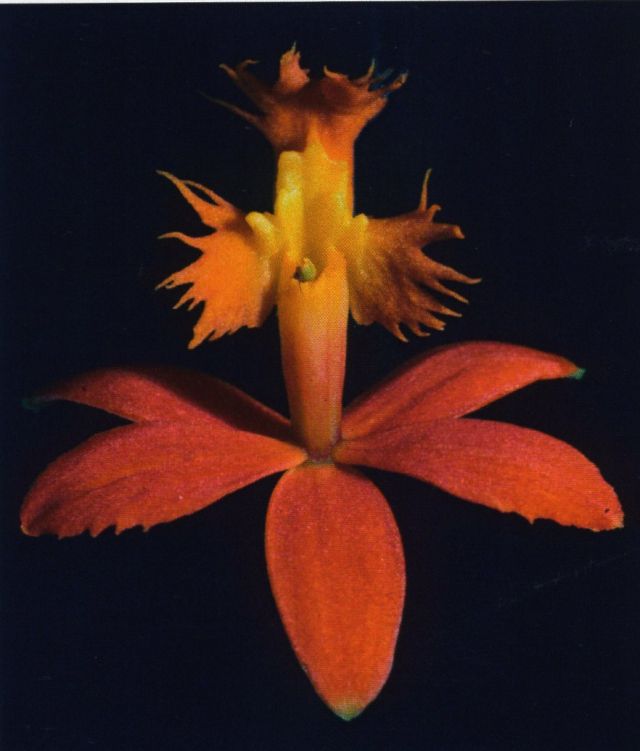

Epidendrum ptochicum Hágsater 2006 GROUP Secundum SUBGROUP Elongatum
Photo/TYPE Drawing by © Hagsater and The AMO Herbaria Website





Common Name The The Poor Epidendrum [refers to the weak, poor appearance of the plant and flowers]
Flower Size .6” [1.5 cm]
Found in southern Colombia, Ecuador and northern Peru in the Pacific lowlands in very wet rainforests to dry forests at elevations around 600 meters and on the Amazon slope at elevations up to 1300 meters as a medium to large sized, warm to cool growing, caespitose epiphyte or lithophyte, also found in association with ants on citrus trees with simple, cane-like, terete, thin, straight stems carrying 15, alternate, distichous, all along the stem, narrowly elliptic to lanceolate, rounded to bilobed, sometimes dorsally carinate, coriaceous, smooth, margin entire leaves that blooms in the winter and spring on a terminal, without a spathe, racemose, erect, peduncle elongate, terete, enveloped by tubular, acute sheaths, new racemse arise form the subapical nodes, successively several, 13 to 33 flowered inflorescence with much shorter than the ovary, triangular, acuminate floral bracts and carrying non-resupinate, non fragrant, deep orange to red flowers with a canary yellow callus on the lip bordered by pale orange and an orange column with a yellow apex.
"Epidendrum ptochicum belongs to the GROUP Secundum SUBGROUP Elongatum which is characterized by the caespitose habit, simple, terete stems, numerous, oblong-elliptic, bilobed leaves, a mostly elongate inflorescence with a raceme of successive, non-resupinate flowers, the lip with a complicated, fleshy callus. The species is recognized by the poor, weak-looking plants and flowers, when compared with most other species of this group, the deeply 3-lobed lip; the margin deeply fringed, the callus formed distinct, finger-like basal knobs followed by a 3-dentate apical structure, the flowers are normally deep orange to red, with the callus and the apex of the column yellow, peach and white colored flowers have been seen in Ecuador, the species is normally myrmecophilus when epiphytic and no large specimens have been seen in the field. E melinanthum has sturdy terrestrial plants with numerous yellow flowers, the callus a very fleshy, shallowly 3 lobed structure terminating in a short central keel." Hagsater etal 2006
Synonyms
References W3 Tropicos, Kew Monocot list , IPNI ; * Icones Orchidacearum 8 Plate 877 Hagsater 2006 drawing fide; Orquideas, Tesoro de Colombia Vol 2 Ortiz & Uribe 2017; Icones Orchidacearum 18(2) Plate 1884 Hagsater & Jimenez 2021 see recognition section
--------------------------------------------------------------------------------------------------------------------------